Kedarnath Temple: The Abode of Lord Shiva
 Mountains Curve
01 May, 2025
35 mins read
1762
Mountains Curve
01 May, 2025
35 mins read
1762
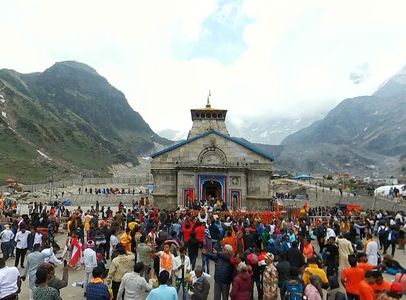
Kedarnath Temple (Sanskrit: KedÄranÄtha Mandira, Temple of the Lord of the Field) is a Hindu shrine dedicated to Lord Shiva, situated high in the Garhwal Himalayas of Uttarakhand, India. Perched at about 3,583 meters (11,755 ft) above sea level on the Mandakini River, it is the highest and northernmost of the twelve Jyotirlinga shrines of Shiva. The name Kedarnath comes from Sanskrit kedara (fieldâ) and nÄtha (lord), a poetic reference to the belief that spiritual cropsâ of liberation are reaped here. The main deity of temple is a polished black stone Shiva lingam, regarded as self-manifested (swayambhu). Outside the shrine, a massive statue of Nandi (Shiva's sacred bull) stands guard. Inside the small pillared mandapa (hall) adjoining the sanctum are images of Goddess Parvati (consort of Shiva) and the five Pandava princes, reflecting the deep mythic heritage of temple. Architecturally, the temple is built of enormous grey stone slabs fitted together without mortar, using iron clamps to lock them as an enduring example of traditional Himalayan temple construction.
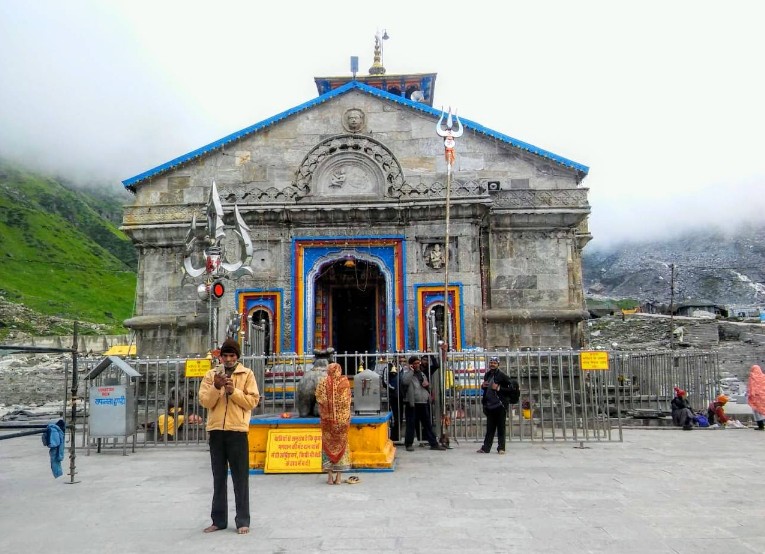
Because of its extreme Himalayan setting, the temple is open to pilgrims only about six months of the year (generally April or May through October/November). In winter, the idol (lingam) is carried down to Ukhimath (in lower-altitude Rudraprayag district) for worship until the snow melts. Kedarnath lies in Rudraprayag district, roughly 220 km north of Rishikesh, and is part of the sacred Chota Char Dham pilgrimage circuit (the other three Dhams being Yamunotri, Gangotri, and Badrinath). It is also considered the first of the Panch Kedar Yatra (five Shiva shrines) in the Himalayas. Pilgrims revere Kedarnath as a dwelling place of Shiva himself - hence the epithet of the temple of the abode of Lord Shiva. Its religious importance is attested by ancient texts: Kedarnath is praised in medieval Sanskrit writings and is even counted among the 275 Paadal Petra Sthalams sung by early Tamil Saiva saints. Tradition holds that the great 8th-century sage Adi Shankaracharya revived the temple during his time. For centuries the temple has drawn pilgrims through its combination of powerful mythology, simple beauty, and dramatic mountain grandeur. In recent years, visitation has surged (about 1.2 million by mid-2023), making Kedarnath not only a modern travel destination but also a vibrant center of Shiva devotion.
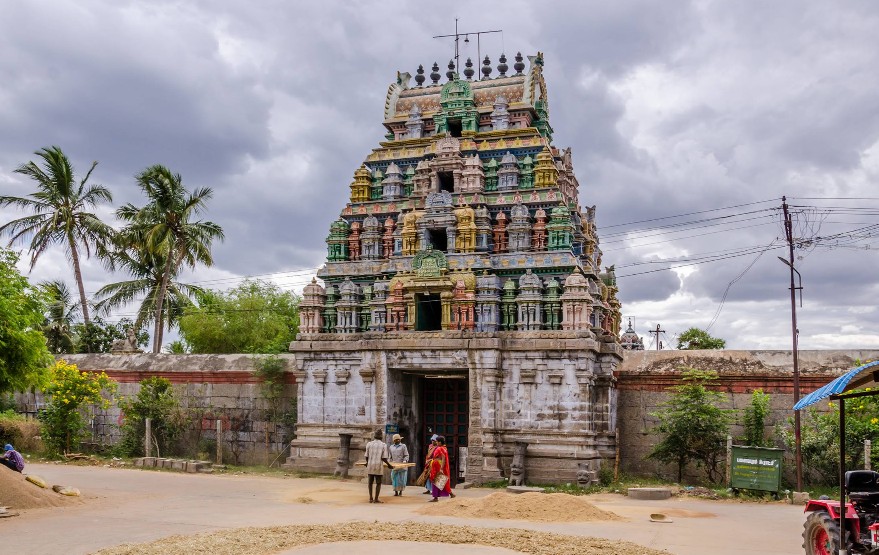
History and Legends
According to Hindu legend, origins date of Kedarnath back to the epic Mahabharata. After the Kurukshetra war, the Pandava brothers sought to atone for their sins and desired blessings of Shiva. Shiva, wishing to test them, fled in the form of a wild bull and disappeared into the Garhwal hills. The bull wandered to the area of Guptakashi (Hidden Kashi). Bhima, the second Pandava, recognized the bull as Shiva. He caught the bull by its tail and hind leg, but Shiva, still in disguise, dived into the ground. As Shiva vanished, only parts of his bull-form emerged at different places: the hump appeared at Kedarnath, the arms at Tungnath, the face at Rudranath, the stomach at Madhyamaheshwar, and the hair at Kalpeshwar. These five locations became the Panch Kedar pilgrimage. The Pandavas were delighted when Shiva reappeared in five parts; they consecrated temples at each site. Thus, Kedarnath is said to mark where bull-hump of Shiva manifested. Myth says the Pandavas themselves built the first temple at Kedarnath and performed great sacrifices (yagna) there before ascending to heaven via Swargarohini peak. Even today, local villagers honor the Pandavas through a traditional Pandav Lila dance and commemorate nearby shrines (for example, Triyuginarayan) tied to their story of Shiva and Parvati.
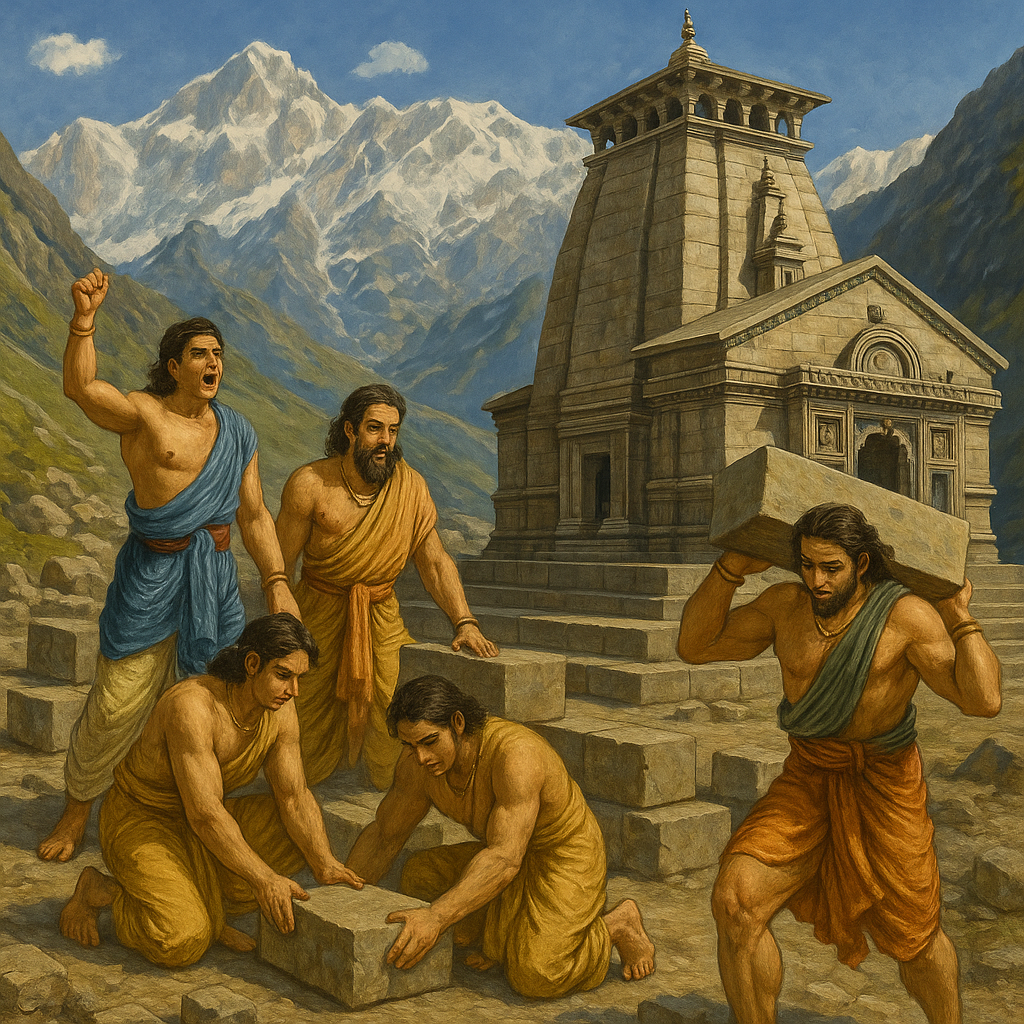
Other legends are also woven around Kedarnath. One tells of Nara and Narayana (divine sages incarnated from Vishnu) who performed harsh penance in these mountains. Pleased with their devotion, Shiva agreed to reside here as a lingam so that future pilgrims would have a dwelling to receive grace. Indeed, the Skanda Purana (medieval scripture) explicitly names Kedarnath (called Kedara) as the spot where Shiva released the holy Ganges from his hair. Another tradition says Goddess Parvati performed penance at Kedarnath to unite with Shiva in the form of Ardhanarishvara (the half-male, half-female manifestation). Hindu lore also credits the great warrior Arjuna (of the Pandavas) with having come here to seek celestial weapon of Shiva. These intertwined stories of gods, sages, and heroes give the temple its profound mythic significance.
While the exact historic age of the temple is unknown, it is documented as a pilgrimage site by at least the 12th century. A Sanskrit chronicle (Ká¹›tya-kalpataru, c.1100 CE) mentions Kedarnath as a famed shrine. The Saivaite poet Appar (7th century) and others composed hymns in praise of the Kedarnath lingam, incorporating it into the broader devotional tradition. Local tradition holds that Maharaja Janamejaya (a mythical successor to the Pandavas) granted lands and worship rights to the temple earliest priestly families. In later centuries, the temple came under royal patronage at times, and its priesthood evolved: by the Mughal period, the head priest (called Rawal) was appointed from a Lingayat community in Karnataka, while local Brahmins (from the Jangam caste) assisted in daily rites. Behind the main shrine is said to be the samÄÂdhi (memorial) of Adi Shankaracharya, who is credited with restoring Kedarnath worship routines after long decline.
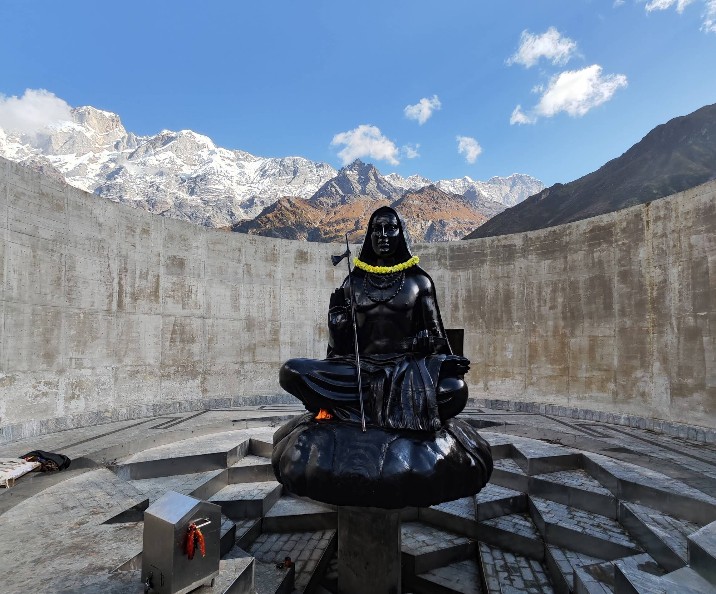
Accounts from British India note that, until the early 20th century, one priest would even travel to perform puja at both Kedarnath and Badrinath on alternate days, reflecting the old practice of annual idol transfers between the shrines. Over time, Kedarnath has remained a living fusion of legend and history: its ancient lore continues to guide the faith of pilgrims, even as documented history links it firmly to medieval and modern Hindu tradition.
Deities and Architecture
The presiding deity of Kedarnath is the Shiva lingam in the sanctum. This stone lingam is notable for its size and form: it rests on a cylindrical pedestal about 3.6 meters (12 feet) tall and equally wide. The linga itself has a conical shape at the top, symbolizing Shiva in his SadÄÂÅ›iva aspect (the eternal form). Worshippers cover the lingam with offerings of water, milk, and ghee (clarified butter) as part of daily rites. Local tradition holds that its unusual shape recalls story of Shiva here, and priests regularly anoint it with ghee in memory of Bhima reverence.
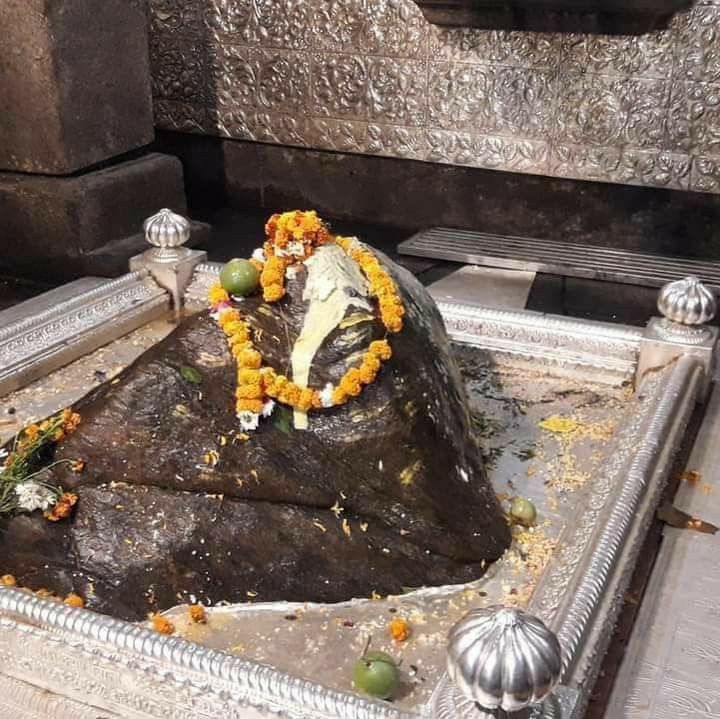
Approaching the inner shrine, devotees enter a small pillared hall. This mandapa houses statues of deities from Hindu mythology. On its walls and niches are images of the five Pandava brothers and their common wife Draupadi, honoring the legends of the temples founding. Also present are idols of Lord Krishna, Nandi ( bull of Shiva, the same form he took), and Virabhadra (a fierce form of Shiva). Visitors to the temple are first greeted by a grand stone carving of Nandi set just outside the entrance, symbolizing the need to honor Shivas mount before approaching the lord. These figures the heroic Pandavas, the divine couples, and Shiva attendant emphasize the role of temple as a focal point of mythology of Shiva.
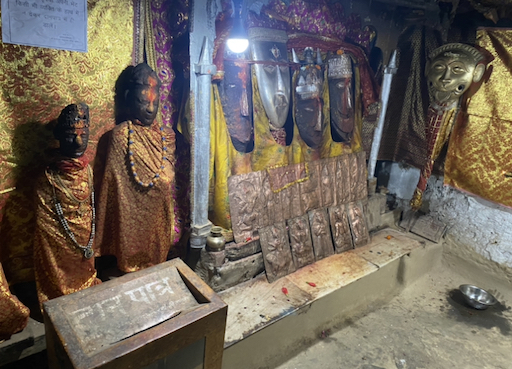
Kedarnaths architecture is sturdy and austere. It is built entirely of massive grey stones (locally quarried) placed in horizontal courses. The entire structure including walls, base and roof is made of interlocking stone slabs held by iron clamps; no mortar was used. This ancient engineering gives the temple remarkable stability against landslides or flooding. The main shrine rises in a tapering tower (shikhara) about 15 meters tall, with a square base roughly 9 meters on a side. The roof over the mandapa is flat or slightly sloping, made of thick stone slabs, and supported by wooden beams (visible in the inner porch area). There are no ornate carvings on the exterior the aesthetic is utilitarian and monastic, befitting the high-altitude wilderness.
Behind the temple stands a small memorial to Adi Shankaracharya, marking the saint traditional association with Kedarnath. The temple courtyard is enclosed by a low stone wall with an entrance gate; within are a few samadhis of local saints and a sacred pond (Kund) used in rituals. In summary, Kedarnath architecture is defined by solidity and simplicity: a massive rock sanctuary set into the Himalayan valley, built to last for ages. This solid stone construction coupled with its remote mountain setting gives the temple an enduring, timeless quality befitting its divine dedication.
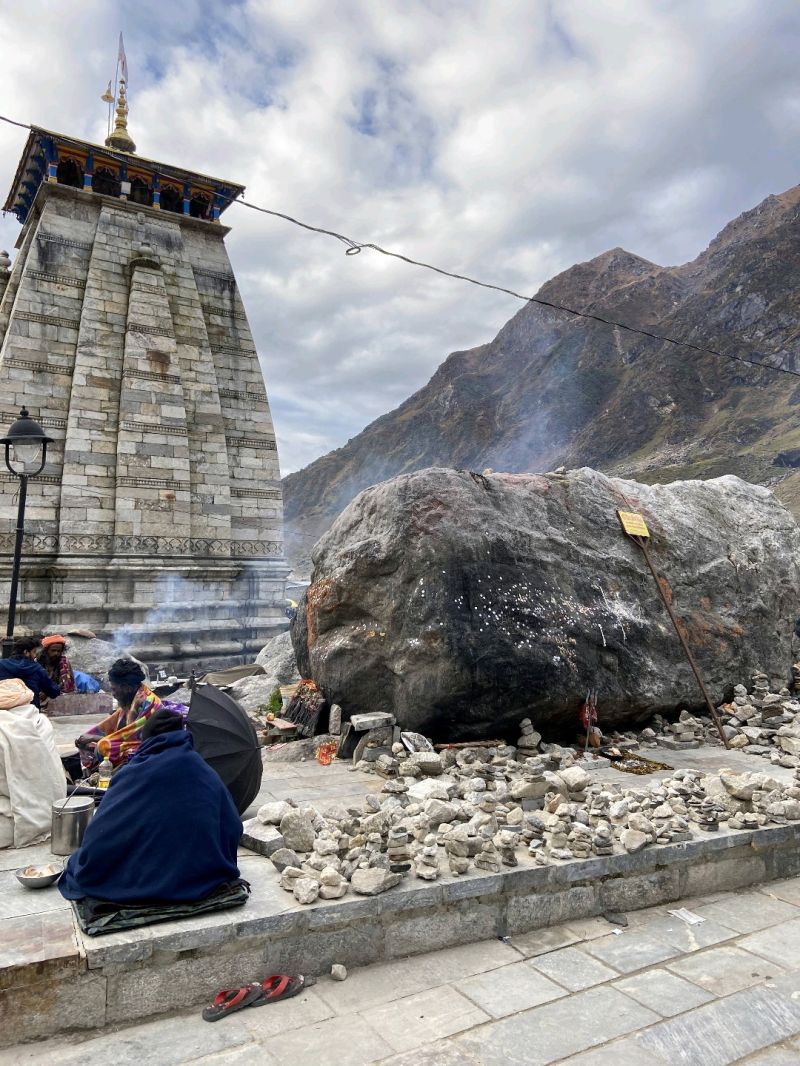
Rituals
Within Kedarnath stone sanctuary, priests and pilgrims observe a rigorous schedule of worship each day. The priestly hierarchy includes a Rawal (chief priest, traditionally from the Lingayat sect of Karnataka) who supervises the rituals, while a team of local Brahmin priests actually perform the daily ceremonies under his direction. The temple adheres to traditional Shaiva ritual sequences. Worship begins long before dawn, around 4:00 a.m., with the Maha Abhishek (great bathing) of the lingam. In this rite the deity is washed with milk, yogurt, ghee, honey, and water, accompanied by Vedic chants. After the abhishek, priests perform the first aarti (lamp ceremony) of the day. By about 6:00 a.m., the temple opens its doors to pilgrims for darshan (viewing of the deity).
Pilgrims can participate by offering prayers, circumambulating the temple, and presenting flowers and bilva leaves. Throughout the morning there are additional pujas: the lingam is adorned in the Udvajanam Puja (main decoration) and seated comfortably with sandal paste (Shringar Aarti). A Bhog Puja (food offering) is also made, where cooked rice, fruits and sweets are presented to Shiva. Each offering is later shared as prasad with the devotees. Around midday, the temple closes briefly (often about 3:00-5:00 p.m.) while the priests take rest and perform private chants.
In the late afternoon, daily rituals resume. At sunset the priests conduct the Dhoop Aarti, presenting lighted lamps and incense to the lingam with rhythmic waving motions as hymns are sung. Following this is usually a final Bhog distribution. Then, at around 7:00 p.m., the Shayan (Sleep) Aarti is performed: priests sing lullabies and wave burning lamps to put the deity to rest for the night. After the final aarti, the temple is closed for the evening. In total, eight or more ceremonial steps (opachar) are observed each day, in accordance with traditional Shiva worship from simple offerings of light and water to elaborate multi-step services.
The temple calendar also features special observances. The most important festival is Mahashivaratri (in late winter) when Shiva is worshipped all night with continuous chanting and additional abhisheks; even though the temple is officially closed for the season, pilgrims gather in Ukhimath (where the lingam resides) for Maha Shivaratri. During the open season, Mondays of the month of Shravan (July - August) are considered highly auspicious, and grand Rudra Abhishekams are held on those days. Other Hindu holy days such as Narad Jayanti or simple poornima (full-moon) pujas see additional aarti ceremonies at Kedarnath. In all these rites, priests chant portions of the Shiva Sahasranama (thousand names), Shiva Tandava Stotram, and other hymns.
Devotees visiting Kedarnath may either join the daily pujas or sponsor them. The temple committee allows pilgrims to book any of the pujas in advance through its office or online portal. For example, a devotee can pay the fee for a Rudra Abhishek or a Shodashopachar Puja (16-step service) and be present while the priests carry it out, or have it done on their behalf. Even if not present, pilgrims often send special offerings (ghee, flowers, rasiwada) to be used in their name. Simpler acts lighting a lamp at the temple entrance, offering bilva leaves at the lingam, or receiving prasad are freely done by all visitors. In this way, Kedarnath provides a full spectrum of Shiva worship ceremonies, from the formal daily aartis to a variety of optional puja services, allowing each pilgrim to engage with the sacred as they wish.
2013 Floods
In June 2013, Kedarnath Valley faced one of the worst natural disasters in its history. Torrential monsoon rains triggered devastating flash floods on the nights of June 16-17. Around 8:30 p.m. on June 16, a massive landslide and cloudburst above Chorabari (Gandhi) Tal released enormous volumes of water and debris into the Mandakini River. Early next morning (June 17 at about 6:40 a.m.), a second deluge fed by the swollen Saraswati stream and tal (lake) struck with equal or greater force. A wall of water, mud, boulders, and uprooted trees swept down the valley, overwhelming everything in its path. Roads, bridges, shops and hotels were destroyed, and villages were either washed away or buried under silt.
Thousands of pilgrims were in Kedarnath at the time. Hundreds had taken refuge inside the stone temple itself, along with priests and residents. Miraculously, the temple structure withstood the onslaught. Eyewitnesses described how a colossal boulder became jammed behind the shrine, deflecting much of the flood around the sides of the temple rather than through it. This huge rock (subsequently dubbed the Bhim Shila) and the temples solid construction prevented collapse. Hundreds of people sheltered in the courtyard survived the night; when dawn came, they emerged to find the entire town devastated except for the sanctuary. In Kedarnath town itself, however, the scene was catastrophic: the waters had washed away most buildings. Officials later reported that perhaps 3,000-5,000 people were killed in the Mandakini valley and thousands more missing (including many pilgrims).
Rescue and relief operations began immediately. Indian Army and National Disaster teams airlifted thousands of survivors by helicopter. Over 7,000 people were evacuated from Kedarnath town alone in the first few days. Rescue crews also took relief supplies into the rugged valley. On June 18, the Uttarakhand Chief Minister ordered that Kedarnath shrine be closed for a year to clear the debris and rebuild. The flood scale in Uttarakhand was staggering (over 5,700 people died in the state), but for the temple, the outcome was that it stood largely unscathed.
In the aftermath, experts examined Kedarnath Temple to assess any damage. Teams from the Archaeological Survey of India and IIT Madras found the foundation and walls structurally sound; no major cracks were reported. They concluded that the temple ancient masonry heavy stone blocks interlocked without mortar was remarkably resilient under such pressure. Local worshippers saw this as a sign of Shiva protection, while engineers cited it as a triumph of engineering.
Reconstruction of Kedarnath Valley then became a major effort. Bulldozers and workers removed tons of debris from the temple courtyard and approaches. The ruins of Kedarnath town were cleared, and new pathways and retaining walls were built. Under Colonel Ajay Kothiyal, the Nehru Institute of Mountaineering led a year of high-altitude road and camp reconstruction to ensure the pilgrimage could resume. By May 2014, about a year after the disaster, Kedarnath Temple was reopened with full ceremonies. The government launched an even larger redevelopment plan: architects redesigned the settlement layout, relocating vulnerable housing uphill and creating broad walkways. Four dedicated helipads (at Sitapur, Sonprayag/Sirsi, Phata, and Guptkashi) were established, and helicopter services were formalized to ferry pilgrims. New rest houses, medical aid centers, and improved communications were put in place.
Since reopening, Kedarnath pilgrimage has come back stronger. Infrastructure upgrades have made access safer and smoother. Today, the temple survival is part of its modern legacy studied by disaster experts and remembered by devotees. Each year, pilgrims note the scarred landscape and the intact shrine as a powerful testament to resilience. The floods are commemorated quietly, even as life returns to the valley. In sum, the 2013 catastrophe tested Kedarnath faith and structure, but in the end it also led to revitalization: the ancient stone temple stands steady, guarded by mythic rock and human determination alike.
How to Reach
Reaching Kedarnath requires a multi-stage journey through the Himalayas, combining air, rail, road, and trekking. By air, the nearest commercial airport is Jolly Grant Airport in Dehradun, about 240 km away. Dehradun has daily flights from Delhi (and other Indian cities). From Dehradun, travelers must continue by road: one can take a taxi or bus through Srinagar (Garhwal) and Rudraprayag to Gaurikund (the road-head village for Kedarnath). The drive from Dehradun to Gaurikund typically takes 10-12 hours by public bus or car, covering winding mountain highways (for example, NH 7/ NH 94 to Srinagar, then NH 107 to Rudraprayag, and NH 109 to Gaurikund). There is currently no nearer airport of significance; Haridwar small airport is not fully operational for flights.
By rail, the closest major railway stations are Rishikesh (216 km away) and Haridwar (about 210 km). Trains on the Delhi-Haridwar line (including to Rishikesh) run frequently from New Delhi and other northern cities. Upon arrival at Rishikesh or Haridwar station, pilgrims must continue by road toward Rudraprayag and then Gaurikund, using state buses or rented taxis. From Haridwar, one common route is via Devprayag (where the Alaknanda and Bhagirathi rivers meet) to Srinagar (G) and then Rudraprayag. Road trips from these railheads to Gaurikund take roughly 7-9 hours. Tickets on Uttarakhand State Transport buses, or shared cabs, can be booked in advance or at the stations.
By road, the pilgrimage may start from New Delhi or any Uttarakhand town. Direct buses operate from Kashmere Gate ISBT (Delhi) to Rudraprayag or even Joshimath; from there, onward transport goes to Gaurikund. Private vans can also be hired from Delhi to Gaurikund, though the long drive is demanding. Internally, Uttarakhands network connects cities like Rishikesh, Pauri, Tehri, Chamoli, and Srinagar (Garhwal) with Gaurikund via highways. For example, NH 109 runs from Rudraprayag to Gaurikund. During the Yatra season, additional bus services run from Haridwar/Rishikesh directly to Gaurikund as well. Note: motorable roads end at Gaurikund (elevation ~1,950 m). From Gaurikund, the temple must be reached by foot or by helicopter, as no vehicles can go further. There is a small temple of Goddess Gauri at Gaurikund; beyond this, the mountain trail begins.
The trek from Gaurikund is about 16 km long (after the 2013 floods, the route was slightly lengthened from the original 14 km). It typically takes 6-8 hours on foot (altitude gain ~1,000 m) for a reasonably fit person. The path leads steadily uphill through fir forests, past rivers and mountain slopes. Important halts along the route include Jungle Chatti (about 4 km from Gaurikund) and Bhim Bali (7 km), where pilgrims can find tents, tea shops, basic rest areas and first aid. Further along is Lincholi (11 km) a larger campsite with GMVN dorms and drinking water and then Kedarnath Base Camp at about 15 km (12,000 ft), offering the last staging area. The final stretch (1 km) from the base camp to Kedarnath temple is shorter and easier. Along the way, porters carrying palkis (traditional palanquins) and ponies can be hired to carry pilgrims or luggage for most of the trek. (These services must be booked at Gaurikund or Sonprayag in advance, as numbers are limited.)
Helicopter service is the other way to reach Kedarnath. Starting from 2015, Uttarakhand Government and private firms run helicopter shuttles to Kedarnath valley. Pilgrims fly to a helipad on a mountain ridge and then take a short walk to the temple. There are four main helipads in the region: Sitapur (Rambada, about 22 km from Kedarnath), Sonprayag/Sirsi (near Phata, about 23 km away), Phata (31 km), and Guptkashi (Narayankoti, 46 km). Flights operate from 7:00 a.m. onward, with slots booked weeks in advance via the official Uttarakhand Char Dham portal (managed by IRCTC). A helicopter ride from Phata or Sirsi to Kedarnath takes roughly 8-10 minutes; from Sitapur only 5-7 minutes; and from Guptkashi about 15 minutes. The landing site in Kedarnath is at a lower elevation (~3,400 m) within a few hundred meters of the temple. Travelers must carry government-issued ID to fly and often pay extra baggage fees. These choppers dramatically reduce travel time (what would be a long trek becomes a short flight), though they are weather-dependent. Helicopters generally operate only April through October, ceasing in bad weather or winter.
Other travel tips: The road approaches can be affected by seasonal landslides or repairs, so it is wise to check local updates before journeying. During the Char Dham pilgrimage, the Uttarakhand government requires all Kedarnath visitors to register online for safety and management; this registration can be done on the official tourism website before departure. Once in Gaurikund, one can register on the spot if needed. Local accommodations (guesthouses, tents) are available at Gaurikund and en route (Jungle Chatti, Bhim Bali, Linchauli) for pilgrims who need to break the journey. It is advised to start the trek or helicopter early in the morning to avoid afternoon monsoon showers. Finally, as a rule, no fuel vehicles are allowed beyond Gaurikund, so plan to carry only essentials. Despite the remote location, improved buses, roads, and helicopter options have made the Kedarnath yatra much more accessible than in the past though it remains a pilgrimage requiring preparation and respect for the mountain terrain.
Weather and Temperature
Kedarnaths weather is dictated by its high-altitude alpine climate. Annual temperatures are very low the mean yearly temperature is barely a couple of degrees Celsius and most precipitation comes from the summer monsoon and winter snow. The site gets about 1,800 mm of precipitation annually, much of it in July and August, and up to 90% of the precipitation is concentrated between June and October. Humidity is generally high during the rainy season and very low in winter. Pilgrims should prepare for large swings in temperature between day and night, as well as sudden weather changes at any season.
Summer (April-June): Spring and early summer are the clearest weather months. Daytime highs climb from around 10-12°C in April to 15-18°C in May-June. Clear sunshine is common, and valleys bloom with rhododendron and pine. However, nights remain cold often dropping to 0-5°C even in June. In June, pilgrims often experience afternoon pop-up clouds or thunderstorms as the monsoon approaches, so rain gear is advised. Overall, this period is mild by Himalayan standards: mountain views are expansive, and conditions are dry compared to later months.
Monsoon (July-August): The southwest monsoon usually arrives by mid-July. This is the wettest, most unpredictable period. Kedarnath may receive over 300 mm of rain in July alone. Heavy rains and mist are common daily, with around 20-25 rainy days per month. Temperatures cool slightly due to clouds: daytime highs seldom exceed 15-18°C, and mornings can hover around 8-12°C. The intense moisture means the air feels chilly, and river levels rise rapidly (historically causing the 2013 flood event). Hiking is harder in rain and fog, and landslide risk is significant. However, the landscape turns lush green and waterfalls cascade down the slopes during this time.
Autumn (September-October): After mid-August, the skies generally clear. September is often considered the best month for trekking: days are crisp (around 12-15°C) with clear blue skies and dry air, while nights drop near 0°C. Temperatures in late autumn fall quickly; by October highs average 8-10°C, and lows approach freezing. Occasional early snowfall may occur in late October, especially at night. The temple typically closes before heavy snow begins. By the closing period (around Kartik Purnima or Diwali), November arrives with frosty mornings (3°C or lower) and bright sunny days (5-8°C). The post-monsoon season is short but glorious, offering comfortable daytime trekking weather and brilliant mountain vistas.
Winter (November-March): Kedarnath is buried under snow for much of winter. Once the temple closes (late October), the village is abandoned due to the extreme cold. December through February sees daytime temperatures that struggle to rise above 5°C, with nights plummeting to 10° to 15°C or lower. Blizzard conditions and drifting snow are common. The Mandakini River valley is snowbound and all trails are impassable. In January, the average low is around 11°C. Pilgrimage is impossible during these months; only priests at Ukhimath tend to the idol. The winters are severe and lengthy, shaping every aspect of life in the Kedarnath region.
In summary, Kedarnaths climate ranges from pleasant (for the high Himalaya) in summer to bitterly cold in winter. Pilgrimage is feasible only during the brief late spring through early autumn window. Travelers must be prepared with warm clothing even in summer, carry rain protection for the monsoon, and be acutely aware that conditions can change rapidly at high altitude.
Pujas Offered
Pilgrims at Kedarnath have many options to participate in formal worship services. Every day the temple priests perform a full schedule of Shiva pujas, and devotees may take part or sponsor them. The key offerings include the morning Abhishekams: the Maha Abhishek is a grand ablution of the lingam with milk, water, honey, and ghee, accompanied by Vedic chants. There are also Rudra Abhisheks (bathing with holy water during recitation of the Rudram hymn), and simpler rituals like the Laghu-Rudra Abhishek. In the morning, priests further conduct the Shringar Puja (decorating the deity with sandal paste, flowers and cloth) followed by Naivedya (food offering). Each of these morning pujas follows the traditional Shodashopachar (16 steps of worship), which includes lighting lamps, waving incense, and offering grains.
In the evening, the temple holds the Dhoop Aarti (lamp ritual) and later the Shayan Aarti when Shiva is ceremonially put to sleep. These aartis involve singing hymns, ringing bells, and waving camphor lamps in elaborate circular motions before the lingam. Priests often chant Shiva Sahasranama (thousand names), the Tandava Stotram, or Paraksham Stotram as part of these ceremonies. A Bhog Puja (offering of prepared food) is performed daily, after which the cooked prasadam (rice, fruits, sweets) is distributed to devotees.
Special pujas are available on request. For example, pilgrims can sponsor a comprehensive Entire Day Puja package, which includes Mahabhishek, Shodashopachar, and other rites in sequence. On festivals such as Mahashivaratri, an all-night vigil and extra pujas are organized (though for Kedarnath the idol is at Ukhimath in winter). Many devotees also observe the custom of offering sacred items: coconuts, bilva leaves, jaggery, or holy water (from the Ganges or other Dhams) are common offerings at Kedarnath shrine.
The temple committee facilitates devotion by allowing pilgrims to book pujas in advance. Through the official Shri Badrinath-Kedarnath Temple portal or the on-site office, a devotee can arrange for a specific ritual to be performed with or without their physical presence. Whether simple (joining a puja aarti) or elaborate (sponsoring a full abhishek), these services deepen a pilgrims engagement. In essence, Kedarnath offers the full spectrum of Shiva worship ceremonies ablutions, offerings, chants, and aartis so that visitors may personally connect with the deity according to their faith and tradition
Written By:
Mountains Curve



Hotels at your convenience
Now choose your stay according to your preference. From finding a place for your dream destination or a mere weekend getaway to business accommodations or brief stay, we have got you covered. Explore hotels as per your mood.





